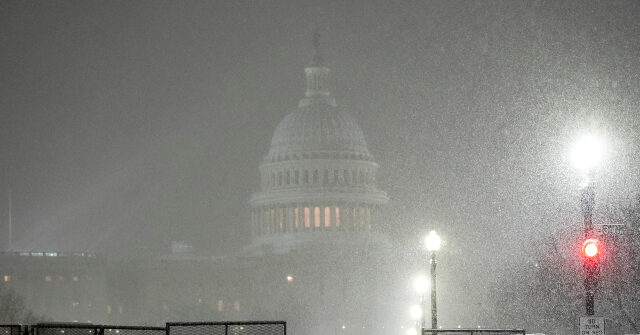
On a snowy Monday, Congress convened to formally certify the 2024 presidential election results, officially confirming President-elect Donald Trump’s victory and his historic political comeback. The near-empty Capitol complex, secured by a massive perimeter due to a severe snowstorm, stood in stark contrast to the momentous occasion. President-elect Trump, following the proceedings from Mar-a-Lago, celebrated the event on Truth Social, declaring it a “BIG MOMENT IN HISTORY. MAGA!”
The certification process, largely dictated by law and precedent, with modifications from the Electoral Count Act of 2022, began with brief sessions in each chamber before a joint session at 1:00 p.m. Vice President Kamala Harris presided over the ceremony, a uniquely poignant role considering her own electoral defeat. The process involved the alphabetical certification of electoral ballots by state, each inspected by four tellers.
While members of Congress could challenge state electoral votes, the significantly raised threshold established by the Electoral Count Act of 2022—requiring a one-fifth majority in both the House and the Senate—made such objections highly improbable. Vice President Harris’s role was strictly ministerial; she lacked the authority to influence the outcome, serving primarily to announce the final tally.
Despite a general expectation of smooth proceedings, the potential for Democratic theatrics remained. Although strong indications pointed towards Democrats forgoing objections, their historical pattern of contesting Republican victories since 2000, suggested the possibility of individual members creating a disruption. While the absence of former Representative Jamaal Bowman lessened the likelihood of extreme actions, the presence of other progressive members of the House Democratic Caucus left room for unpredictable events.
Ultimately, the official certification proceeded swiftly and without significant incident. The joint session lasted approximately half an hour, with no objections raised from any state. The absence of the pandemic-era restrictions and the contentious atmosphere surrounding previous certifications underscored a notable shift in the political landscape.
The event marked a clear victory for Trump and the Republican Party, solidifying their governing trifecta. This successful certification sets the stage for a second Trump administration, potentially quite different from the first, with a unified Republican party focused on a shared agenda. Conversely, the Democrats, lacking a clear leader and exemplified by Harris’s role in the certification, appeared to be navigating a period of political uncertainty. The historic day concluded with the official announcement of Donald J. Trump as the 47th President of the United States, poised to be inaugurated on January 20, 2025.

